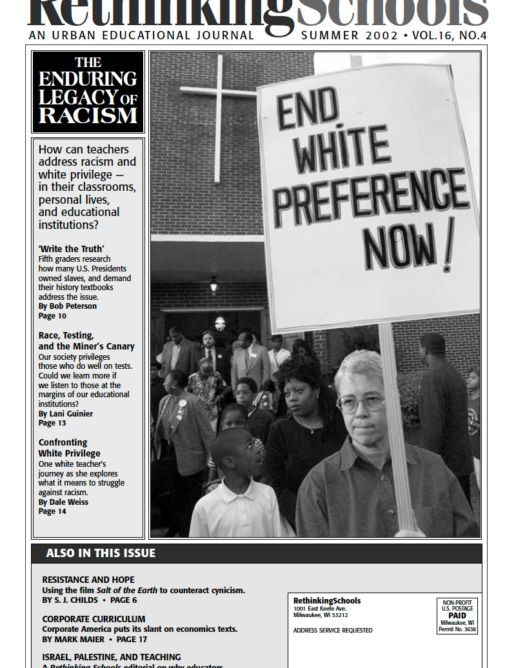Researching Presidents and Slavery
When my students and I began investigating which presidents owned enslaved people, our attempts focused on traditional history textbooks and student-friendly websites from the White House and the Smithsonian Institute. These efforts turned up virtually nothing.
We then pursued two different sources of information: history books written for adults and more in-depth websites.
I brought in two books that were somewhat helpful: James Lowen’s Lies My Teacher Told Me (Simon and Schuster, 1995) and Kenneth O’Reilly’s Nixon’s Piano: Presidents and Racial Politics from Washington to Clinton (Free Press, 1995). By using the indexes and reading the text out loud, we uncovered facts about some of the presidents.
We used the web search engines google and altavista with the search words “presidents and slavery.” We soon learned we had to be more specific and include the president’s name and “slavery” – for example, “President George Washington and slavery.” Some results were student friendly, such as the mention of the people that Washington owned (and some of their escapes) at www.mountvernon.org/education/slavery. There was also a bill of sale for an enslaved person signed by Dolly Madison, the wife of President James Madison, at http://www.whitehousehistory.org/04_history/subs_timeline/c_africans/frame_c_1810.html.
Many websites had a large amount of text and were beyond the reading level of many of my students. So I cut and pasted long articles into a word processing document so we could search for the word “slave” to see if there was any specific mention of slave ownership.
In their research, students often asked, “How do we know this is true? Our history books aren’t telling the truth, why should we think this does?”
I explained the difference between primary and secondary sources and how a primary source – like a bill of sale or original list of enslaved people – was pretty solid evidence. To help ensure accuracy, the students decided that if we used secondary sources, we needed to find at least two different citations.

